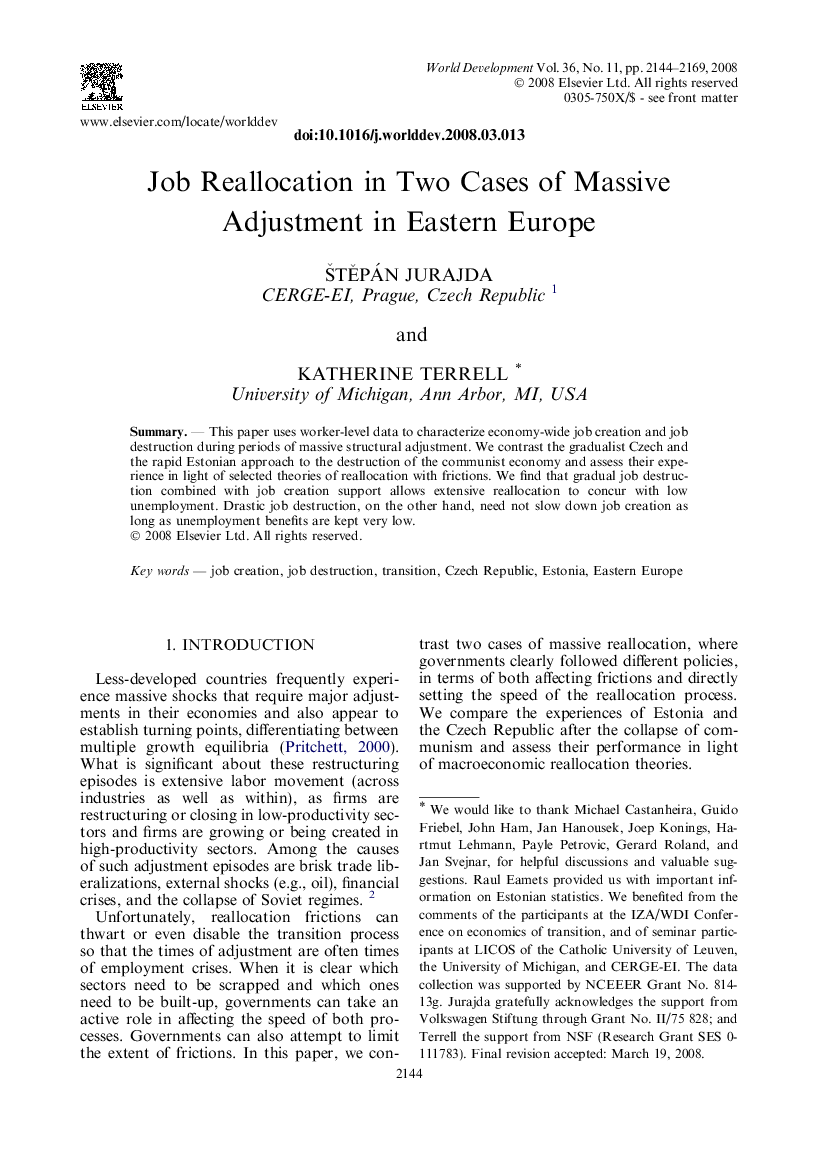| Article ID | Journal | Published Year | Pages | File Type |
|---|---|---|---|---|
| 989357 | World Development | 2008 | 26 Pages |
Abstract
SummaryThis paper uses worker-level data to characterize economy-wide job creation and job destruction during periods of massive structural adjustment. We contrast the gradualist Czech and the rapid Estonian approach to the destruction of the communist economy and assess their experience in light of selected theories of reallocation with frictions. We find that gradual job destruction combined with job creation support allows extensive reallocation to concur with low unemployment. Drastic job destruction, on the other hand, need not slow down job creation as long as unemployment benefits are kept very low.
Related Topics
Social Sciences and Humanities
Economics, Econometrics and Finance
Economics and Econometrics
Authors
Štěpán Jurajda, Katherine Terrell,
